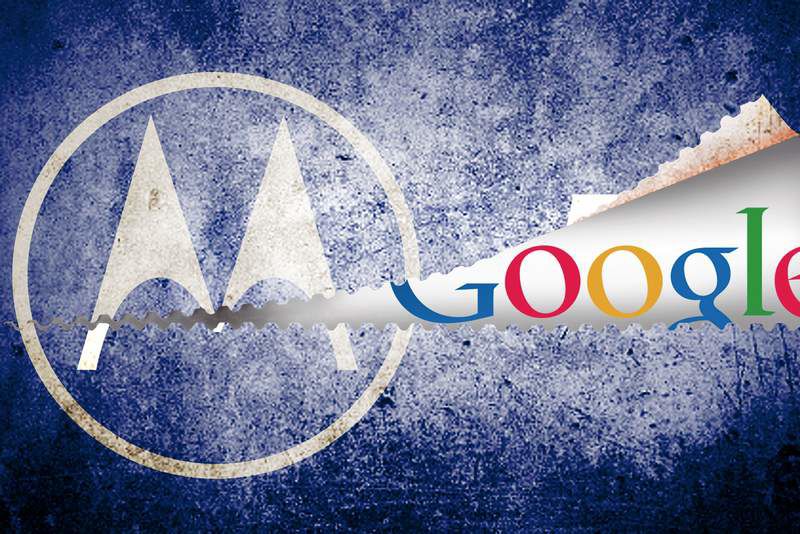Identity crisis looms for Motorola Mobility
Published 5:00 am Tuesday, August 23, 2011

- Illustration by James Best Jr. / New York Times News Service
Hundreds of framed patents hang on two separate walls at the headquarters of Motorola Mobility in Libertyville, Ill. They testify to the pride in innovation at Motorola, a luminary of American business that has survived corporate crises and enormous technological change.
But the company has never grappled with something like this: a murky future governed by Google, a powerful master with unclear intentions.
In announcing its planned $12.5 billion purchase of Motorola Mobility last week, Google emphasized its interest in the company’s rich trove of 17,000 patents. That portfolio would allow Google to defend itself against foes like Apple and Microsoft in the legal arena, where billions of dollars in patent licensing fees can be indirectly negotiated through lawsuits and countersuits.
But while industry analysts and insiders say the rationale makes sense, they also say it leaves Motorola in an unusual position. Many acquisitions are aimed at creating some well-articulated synergy between the two companies, but Motorola’s future role in this union — beyond patent warehouse — is unclear.
Heightening the uncertainty is that the companies involved, both of which declined to comment, are in some ways as different as two technology companies can be. Google makes Internet services and software, thrives on high profit margins and distributes its product using giant data centers. Motorola makes hardware, has modest margins on a good day and moves its products on trucks and airplanes and through brick-and-mortar stores.
At the least, industry analysts said Motorola almost certainly would become a laboratory for Google to seek to perfect Android, its mobile phone software, in concert with newly acquired hardware engineers. Others say Google may wind up giving financial backing to Motorola to help it revive its flagging fortunes in Europe and Asia.
A ‘head-scratcher’
But if it appears to be getting too cozy with Motorola, Google risks upsetting other mobile phone makers like HTC and Samsung, who build some of the most popular smartphones and tablets running on Android.
“How do you compete with your partners and also work with them?” said Ben Schachter, an analyst with Macquarie Capital, who called the situation a “head-scratcher.”
Google has said it will allow Motorola to run independently. But some analysts and investors think Google could markedly pare back or sell big parts of Motorola that create conflicts with partners or are not central to its goals. And that makes for uncertain times for the 20,000 employees at Motorola Mobility in Libertyville, a northern suburb of Chicago, and around the world.
“It’s like, thanks for everything you did in the 20th century, but you’re being bought by a search engine,” said Roger Entner, a telecommunications industry analyst and founder of Recon Analytics, a market research firm. He added, “Nobody ever buys a company and leaves it alone.”
Ups and downs
Motorola traces its beginnings to 1928, when two brothers, Paul and Joseph Galvin, started a company making power converters for household radios. In 1947 it changed its name to Motorola, after its popular car radio brand. The company produced radio phones that helped American troops communicate in World War II, car phones in the 1980s, and the trend-setting MicroTac and Razr cellphones, among other products.
But in recent years, after the Razr’s popularity faded, Motorola flirted with financial doom. It was only in the last few quarters that it surged back under the leadership of Sanjay Jha, a former executive at Qualcomm, who joined Motorola in 2008 when it was in danger of missing the rise of the smartphone.
He made significant changes, cutting thousands of employees and splitting the business in two: Motorola Solutions, which sells equipment to businesses, and Motorola Mobility, which handles consumer products like phones and set-top boxes.
Motorola Mobility scaled back distribution in Europe and Asia, focusing its efforts on North America, Latin America and China. It emphasized fewer phone models and hitched its fortunes to Google’s Android software.
In the company’s second quarter this year, it reported revenue of $3.34 billion and a profit of $26 million. That was up from revenue of $2.6 billion and a loss of $87 million for the same period a year ago.
And the company shipped 11 million devices in the quarter, up from 8.3 million in the same period a year ago. Most of the increase came from smartphones — to 4.4 million, from 2.7 million a year ago.
The company has been unveiling products that dazzle gadget fans — no easy feat when taking on the iPhone. During the Consumer Electronics Show in Las Vegas in January, Jha wowed audiences by unveiling the Motorola Xoom, a tablet computer than many considered to be the first real contender to Apple’s iPad.
But the shipment numbers still pale in comparison to, say, the second quarter of 2006, when Razr sales were soaring. Motorola shipped 51.9 million of them that quarter. That was just before the phone’s price and popularity began to slip, dragging Motorola’s fortunes down with it.
A potential boost
Some analysts say Google has the chance to help Motorola grow. Carolina Milanesi, an industry analyst with Gartner, said Google’s ample pocketbook could help Motorola return to former glory by expanding in places like Europe and Asia, and also by helping it sell lower-cost smartphones that might appeal to a mass market.
Gartner research puts Motorola’s 2010 share of the mobile phone market at 2.4 percent, down from 4.8 percent in 2009, though Milanesi noted that more profitable smartphones were making up an increasing share of Motorola’s sales.
“Money from Google could get them back, if not where they were, to a more prominent role,” she said.






